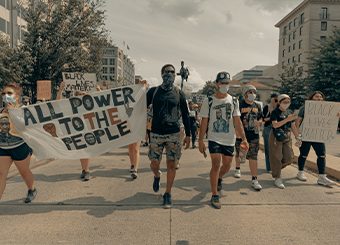That Momentous Week in June and its Potential Consequences for Higher Education

The end of Spring 2020 was quite remarkable, even in this era of social distancing, face coverings and hand sanitizers spawned by COVID-19. Indeed, aside and apart from the ongoing pandemic, three recent events are bound to have far-reaching, long-term implications for many segments of society, including higher education.
The calls for civil rights justice and institutional reforms emanating out of the Black Lives Matter (BLM) protests of George Floyd’s death at the hands of law enforcement only became amplified in the wake of the subsequent police shooting of Rayshard Brooks. In response, public and private entities of all stripes have committed to take action towards the eradication of systemic discrimination.
In higher education, some of that action may reflect itself in affirmative action programs and other admissions policies. The University of California, for example, has already voted to restore affirmative action in the hopes of diversifying its student body, nearly 24 years after it was outlawed by the passage of Proposition 209, banning consideration of race and gender in admissions.
Paradoxically, however, such action could, in the long run, result in less judicial support for such programs. The Supreme Court, in the University of Michigan cases of 2003 (Gratz v. Bollinger and Grutter v. Bollinger), made clear that the need for these programs is not expected to continue in perpetuity, without specifying any time limitations for, or the conditions that would render moot, such programs. Therefore, if the years ahead show an increase in minority enrollment and a further diversifying of student bodies (e.g., the compelling interest justifying affirmative action in the first place), courts may, in time, come to the conclusion that such programs are no longer needed to meet the compelling interest.
These recent events and potential institutional reactions to them may also spark further claims of reverse discrimination – claims which, to date, have proven to be fairly unsuccessful in the face of the compelling nature of higher education diversity, but which may nonetheless gain further traction in our current politically-charged climate and in the face of a much more conservative judicial bench. Lastly, it is worth keeping an eye on campus police units, as they may not be immune to the calls for reform reverberating across the nation, and their missions and/or structures may undergo some measure of change in the years ahead.
In the midst of the BLM protests, the Supreme Court then issued two unexpected, yet highly consequential, rulings in the span of a few days. In Bostock v. Clayton County, the highest court in the land held that the termination of an employee, on the basis of homosexuality or transgender status, violates Title VII’s prohibition of sex discrimination.
The majority opinion took a textual approach in interpreting Title VII to conclude that an employer runs afoul of the statute when it intentionally fires an employee based, at least in part, on sex. Although the terms “sexual orientation” and “gender identity” do not appear in the language of Title VII, the Court found that one cannot make determinations on either of those bases without, in some fashion, considering characteristics of the individual’s sex.
It is worth noting that Title VII’s textual prohibition of sex discrimination is similar to the one that exists in Title IX. It thus stands to reason that future courts may read into Title IX, the same interpretation given in Bostock to Title VII, which, in turn, may lead to expanded access and other opportunities for gay and transgender students and an amplification of the role of the Title IX Office within college and university campuses.
The other Supreme Court decision, in Department of Homeland Security v. Regents of the University of California, invalidated the Department’s 2017 recission of the Deferred Action for Childhood Arrivals (DACA) program. The Court rejected the Department’s rationale for repealing DACA, so the program survives, at least for now. The Trump Administration has already made it known that it will address the concerns raised by the Court in an attempt, once again, to do away with the program.
Until that happens, however, DACA recipients will continue to receive protection from deportation, and be eligible for certain benefits, including the ability to work and study in this country. In addition, states and even individual institutions may seek to further support these populations by expanding access to financial aid, extending in-state tuition rates and offering a number of other resources (e.g. legal, mental health, etc.). The persistence of the debate over the program is likely to bring renewed attention to the underlying problem posed by the precarious status of these individuals, and put pressure on Congress to come up with permanent solutions to this immigration quandary, affecting future recruiting, admissions, enrollment, employment and other aspects of higher education.
The contents of this article are intended to convey general information only, and not to provide legal advice or opinions. Please contact the Office of Legal Affairs (210-458-4105) to obtain legal counsel on any particular university issue or matter.